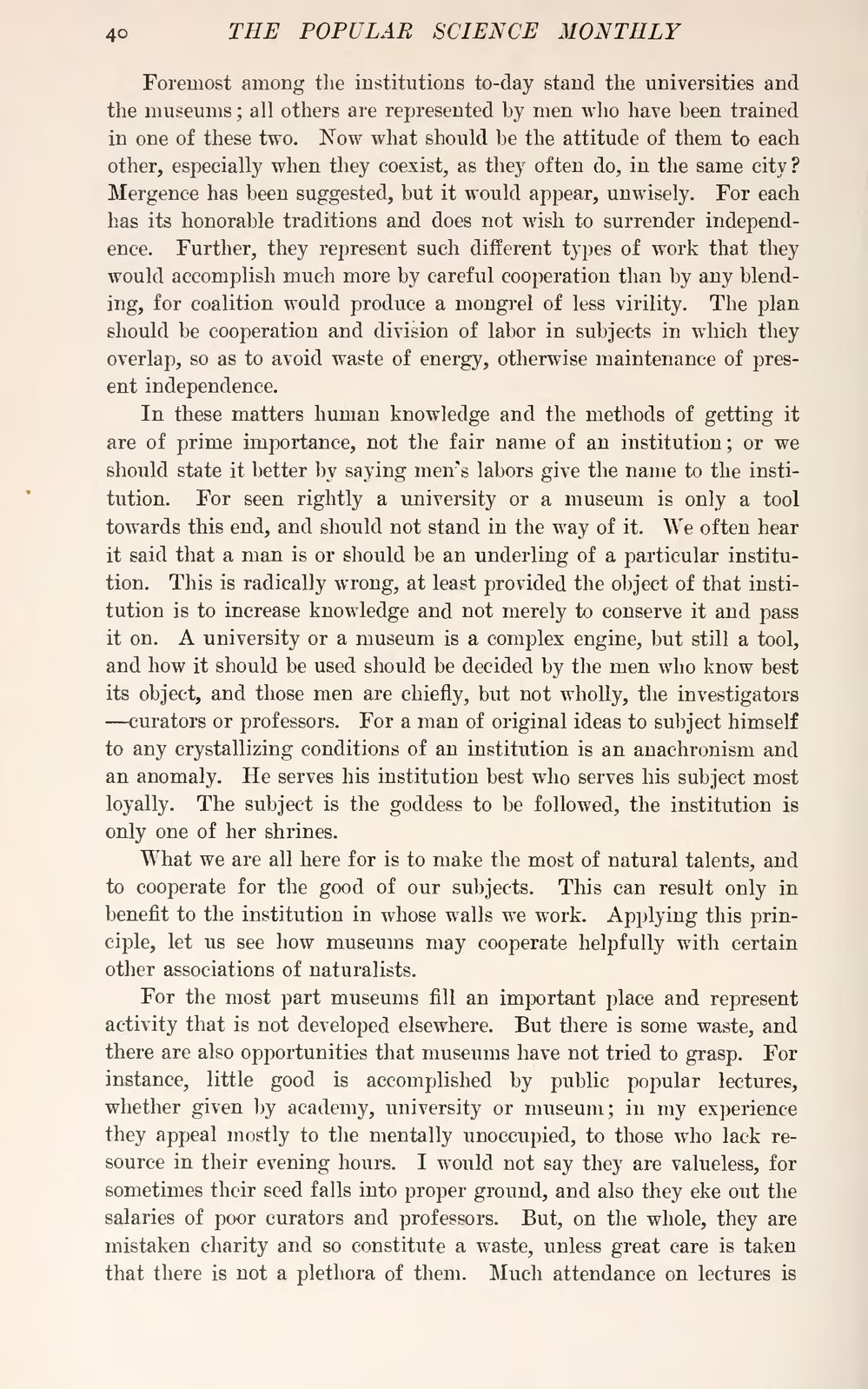Foremost among the institutions to-day stand the universities and the museums; all others are represented by men who have been trained in one of these two. Now what should be the attitude of them to each other, especially when they coexist, as they often do, in the same city? Mergence has been suggested, but it would appear, unwisely. For each has its honorable traditions and does not wish to surrender independence. Further, they represent such different types of work that they would accomplish much more by careful cooperation than by any blending, for coalition would produce a mongrel of less virility. The plan should be cooperation and division of labor in subjects in which they overlap, so as to avoid waste of energy, otherwise maintenance of present independence.
In these matters human knowledge and the methods of getting it are of prime importance, not the fair name of an institution; or we should state it better by saying men's labors give the name to the institution. For seen rightly a university or a museum is only a tool towards this end, and should not stand in the way of it. We often hear it said that a man is or should be an underling of a particular institution. This is radically wrong, at least provided the object of that institution is to increase knowledge and not merely to conserve it and pass it on. A university or a museum is a complex engine, but still a tool, and how it should be used should be decided by the men who know best its object, and those men are chiefly, but not wholly, the investigators—curators or professors. For a man of original ideas to subject himself to any crystallizing conditions of an institution is an anachronism and an anomaly. He serves his institution best who serves his subject most loyally. The subject is the goddess to be followed, the institution is only one of her shrines.
What we are all here for is to make the most of natural talents, and to cooperate for the good of our subjects. This can result only in benefit to the institution in whose walls we work. Applying this principle, let us see how museums may cooperate helpfully with certain other associations of naturalists.
For the most part museums fill an important place and represent activity that is not developed elsewhere. But there is some waste, and there are also opportunities that museums have not tried to grasp. For instance, little good is accomplished by public popular lectures, whether given by academy, university or museum; in my experience they appeal mostly to the mentally unoccupied, to those who lack resource in their evening hours. I would not say they are valueless, for sometimes their seed falls into proper ground, and also they eke out the salaries of poor curators and professors. But, on the whole, they are mistaken charity and so constitute a waste, unless great care is taken that there is not a plethora of them. Much attendance on lectures is

